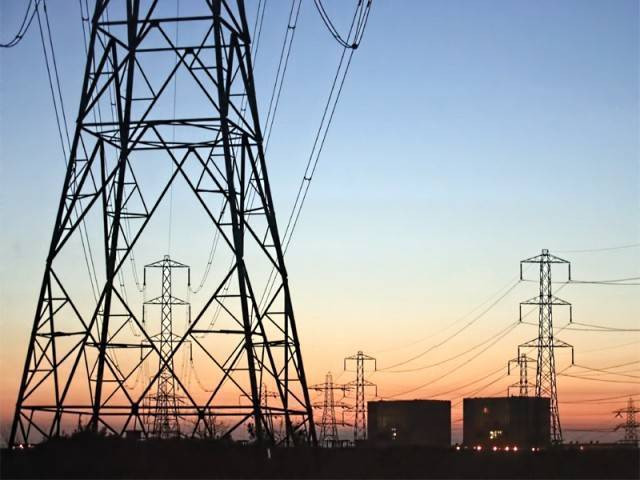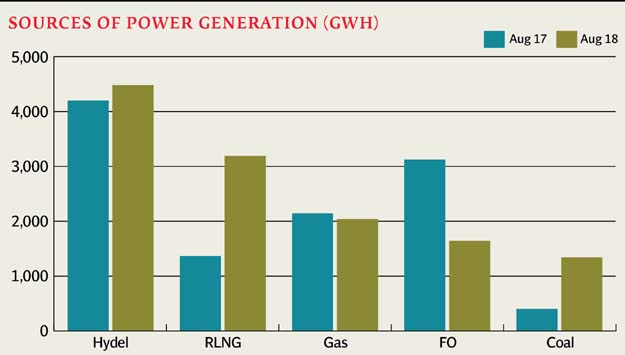Power generation hits all-time high at 14,017GWh
It is the outcome of higher production by imported gas and coal-fired plants

Representational image. PHOTO: FILE
The production was 10% higher than the 12,754 GWh recorded in August 2017, according to data released by the National Electric Power Regulatory Authority (Nepra). The latest data showed that 14,017 GWh was the all-time high power generation level, Arif Habib Limited’s analyst Rao Aamir Ali said in a note to clients on Monday.
This has eclipsed the previous record high of 13,751 GWh achieved in July 2018.
A gradual increase in production from two relatively new fuel sources - imported liquefied natural gas and coal - has continued to eat into the share of oil-based power generation in the total energy mix and has helped save billions of rupees every month in imports.
“Re-gasified LNG and coal have eaten the share of furnace oil,” the analyst noted. Combined share of re-gasified LNG and coal in power production reached 32% in August 2018 vis-à-vis 14% in August last year. On the other hand, the share of furnace oil-based power generation dropped to 11.7% from 24.5%.

“We believe the replacement of furnace oil with coal has been lucrative for the economy,” the analyst said.
“Average cost of generation from coal in August 2018 came in at Rs6.4 per kilowatt-hour (kWh) compared to Rs14.5 per unit from furnace oil. Hence during the month, Pakistan saved Rs10.8 billion ($87 million) by replacing furnace oil with coal, assuming that the power generated from coal has reduced reliance on furnace oil.”
Moreover, the analyst said, if the savings of past eight months were added, they stood at Rs67.4 billion ($570 million). The drop in expensive furnace oil-based power generation was the outcome of previous Pakistan Muslim League-Nawaz (PML-N) government’s increased reliance on imported gas.
The PML-N government added over 5,000 megawatts of installed capacity to the system fuelled by re-gasified LNG and coal and pulled the plugs on around 4,000 megawatts of oil-based power generation, which continued to vary as per consumer needs in summer and winter seasons.
Energy mix composition
Nepra reported that hydroelectric power remained the single largest source of power production with approximate 32% share (4,478 GWh) in total production in August 2018.
However, it was one percentage point lower than the 33% share (4,196 GWh) in August 2017. Coal-based production surged to 9.59% (1,344 GWh) compared to a mere 3.18% (405 GWh) in August 2017.
Furnace oil-based generation dropped to 12% from 24.5% in August last year. Nuclear-based production decreased to 4.48% in August 2018 compared to 5.77% in August 2017. Combined energy production from renewable and alternative sources including wind, bagasse, solar and mixed resources increased to 4.56% compared to 3.05%.
Production cost up
The cost of fuel in power generation increased 23.6% in August 2018 compared to the same month a year earlier.
The increase came in the wake of power generation by a relatively expensive source of energy (re-gasified LNG), but it is cheaper when compared with furnace oil.
Published in The Express Tribune, September 25th, 2018.
Like Business on Facebook, follow @TribuneBiz on Twitter to stay informed and join in the conversation.



















COMMENTS
Comments are moderated and generally will be posted if they are on-topic and not abusive.
For more information, please see our Comments FAQ